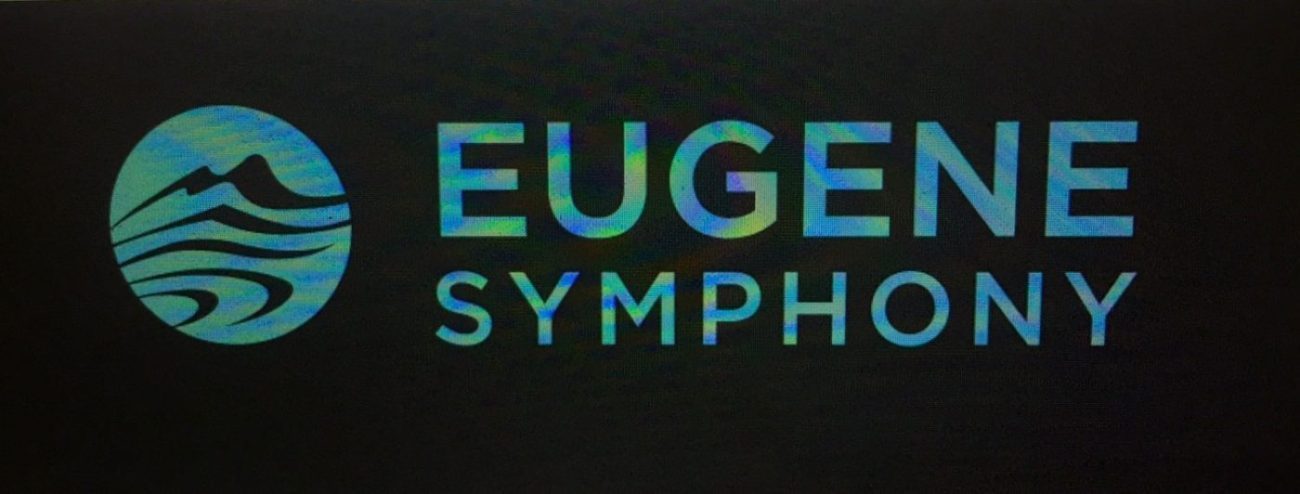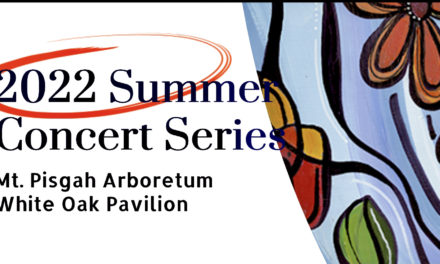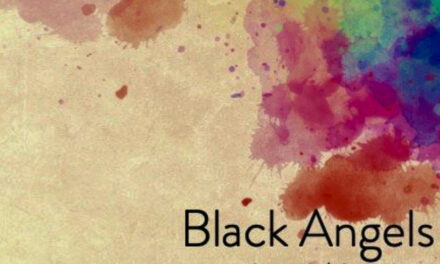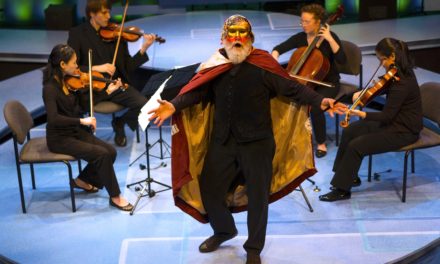By Daniel Buckwalter
Leonard Bernstein. The icon.
He wrote and performed, yes, but his adoration of the music he interpreted and conducted glowed with every movement from the podium. Those interpretations showered the audiences with both visions of grand stories and nuances so small they could be missed by the untrained eye, and they conveyed stories the great composers wanted told.
Audiences always went for the ride. As Anthony Tommasini wrote in August in The New York Times, “(Bernstein) led Beethoven’s ‘Eroica’ Symphony, Mahler’s Fifth and other masterpieces as if he had written them, with an insider’s understanding.”
The Bernstein name resonates for people who love Broadway and classical music, perhaps even more so on this, the 100-year anniversary of his birth (August, 1918) and almost 28 years after his death at age 72 (October, 1990).
The Eugene Symphony Orchestra, led by Music Director and Conductor Francesco Lecce-Chong, salutes Bernstein with a series of concerts.
On opening night — Thursday, Sept. 27, 7:30 p.m. at Hult Center — the orchestra performs three dance episodes from Bernstein’s On The Town.
Proving that Bernstein’s composing reach was vast, Lecce-Chong leads the symphony on Oct. 18 in the maestro’s Symphony No. 2 (The Age of Anxiety), and concludes the tribute on Nov. 15 with Fancy Free.
Also on the opening night program, the symphony will perform Ernest Bloch’s Schelomo: Rhapsodie Hébraïque for Violoncello and Orchestra (and note that Bloch has an Oregon connection that lasts to this day), plus Dmitri Shostakovich’s magnificent Symphony No. 5, written in 1937 at the height — or depth — of Joseph Stalin’s vise-like grip on the old Soviet Union.
Fittingly, the season begins with Bernstein, the consummate musician.
“He liked the comprehensiveness of the word,” writes Tommasini, “which encompassed composing, teaching, advocating on behalf of living composers.”
Bernstein was energy on the podium, swaying and bouncing to every phrase of every movement, “But looking back, it’s hard to fathom why so much fuss was made about this at the time,” Tommasini writes.
“Maestros before him, including his great mentor, Serge Koussevitzky, also had animated conducting styles. Still, there was some different about Bernstein’s hyperkinetic movements … There was something feisty and American about it.”
Interestingly, Tommasini doesn’t believe Bernstein had the same interpretive skills on the podium for work that he composed as he did for the masters of previous generations.
“The generation of conductors he inspired, including Michael Tilson Thomas, Kent Nagano, Robert Spano and, especially, Marin Alsop are more persuasive interpreters of Bernstein’s works,” he contended.
I understand this argument to the extent that I understand editors and their important, interpretive skills. In the hands of the right person — conductor or editor — interpretation becomes art in itself.
Speaking of Alsop, the onetime music director and conductor of the Eugene Symphony who now holds the same titles with the Baltimore Symphony Orchestra, she wrote in a 2006 essay for National Public Radio that Bernstein was at his interpretive best with Shostakovich’s Symphony No. 5. The occasion was the 100-year anniversary of Shostakovich’s birth.
“From the opening battle between upper and lower strings to the complete desolation and apathy of the violin melody a few bars later, imagining Shostakovich’s personal viewpoint can’t help but have an impact on how to interpret his music in a heightened way,” Alsop wrote.
“For example, how fast should it be played? At the very end of the symphony, Shostakovich’s original tempo marking is quite slow. But Leonard Bernstein doubled the tempo in his recording with the New York Philharmonic, and Shostakovich thought it worked very well.”
Symphony No. 5 is gorgeous. Between the fierce first and third movements is the roughly 13-minute second movement that is intense in its intimate musical description of life in the Soviet Union. This was the high time of the Stalinist purges, when millions of Soviet citizens were forcibly relocated, exiled or killed outright. Shostakovich had reason to fear for himself and his family. It was tragic in all ways imaginable.
On that subject, Alsop said in her 2006 essay for NPR, “Against that backdrop, how can we not listen to the work without reading between the notes? Is the blatant patriotic fervor emblematic of Shostakovich’s desire to please his comrades, or a genuine outburst of love for his homeland? Or is it an extreme form of irony, ingeniously straddling both sides of a dangerous abyss?”
Back to the tempo of the third movement and Bernstein’s touch with it, Alsop wrote, “For me, this is a defining moment in the symphony, determined by the entirety of the last movement, and even the journey of the entire piece. I hear the last movement as a gradual acceleration of forces, an increasing sense of hysteria and loss of control until things break down and the fanfare (like the theme) becomes almost nightmarish in sound.”
Bloch’s story is interesting, especially here because of its Oregon connection. Swiss born, Bloch became an American citizen in 1924. In addition to writing a slew of musical scores, he enjoyed a rich academic career that culminated with a posting at the University of California, Berkeley in 1952.
He eventually relocated to Oregon and, tragically, died in Portland of cancer in July of 1959 at the age of 78. In April 1976, the Bloch Memorial was dedicated near his home in Agate Beach by Gov. Bob Straub. From there it was moved to the front of the Newport Performing Arts Center.
In 2009, the Newport City Council designated a street in Newport as Ernest Bloch Place, and in 2016, the Oregon Department of Transportation Board of Commissioners designated the Ernest Bloch Memorial Wayside in the area of Agate Beach where the original memorial was dedicated 40 years before.
With all that on the program, it should be a grand opening night — and season — for the Eugene Symphony Orchestra, Lane County’s preeminent classical music platform.
Eugene Symphony 2018-19 season
Sept. 27 (Opening Night)
- Leonard Bernstein: Three Dance Episodes from On the Town
- Ernest Bloch: Schelomo
- Dmitri Shostakovich: Symphony No. 5
Oct. 18 (Bernstein & Beethoven)
- David Schiff: Stomp
- Leonard Bernstein: Symphony No. 2, “The Age of Anxiety”
- Ludwig van Beethoven: Symphony No. 8
Nov. 15 (Birds of a Feather)
- J.S. Bach: Brandenburg Concerto No. 3
- Jennifer Higdon: On a Wire (featuring the Grammy-winning ensemble, Eighth Blackbird
- Wolfgang Amadeus Mozart: Six German Dances
- Leonard Bernstein: Fancy Free
Dec. 1 (Star Wars Live in Concert; Episode IV; A New Hope)
Dec 6 (The Red Violin)
- Dieterich Buxtehude: Chaconne in E minor
- John Corigliano: Chaconne from The Red Violin
- Camille Saint-Saëns: Havanaise
- Felix Mendelssohn: Symphony No. 4, Italian
Jan. 24 (Tchaikovsky Piano Concerto)
- Grażyna Bacewicz: Overture for Orchestra
- Peter Tchaikovsky: Piano Concert No. 1
- Carl Nielsen: Symphony No. 4, The Inextinguishable
Feb. 14 (Rhapsody in Blue)
- Samuel Barber: Symphony No. 1
- George Gershwin: Second Rhapsody for Piano
- Silvestre Revueltas: Musica para charlar
- George Gershwin: Rhapsody in Blue
March 21 (Doctor Atomic & Brahms)
- Robert Schumann: Manfred Overture
- John Adams: Doctor Atomic Symphony
- Johannes Brahms: Violin Concerto
April 18 (The Color of Sound)
- Alexander Scriabin: Prometheus, The Poem of Fire
- Alexander Scriabin: The Poem of Ecstasy
- Also: Edvard Grieg’s Morning Mood; Claude Debussy’s Claire de Lune; and short works by Felix Mendelssohn, George Frideric Handel, Arvo Pärt, and Gunther Schuller
April 28 (Family Concert: An Afternoon with Beethoven)
May 9 (Verdi’s Requiem)
- Giuseppe Verdi: Requiem
June 1 (SymFest)
- Orchestra performs in collaboration with Ballet Fantastique, vocalist Halie Loren, jazz trumpeter Tony Glausi, the South Eugene High School Dorians choir, and the Eugene-Springfield Youth Symphony
Tickets: Available at the Hult Center box office, 541-682-5000, or online at hultcenter.org
Information: 541-687-9487 or eugenesymphony.org









